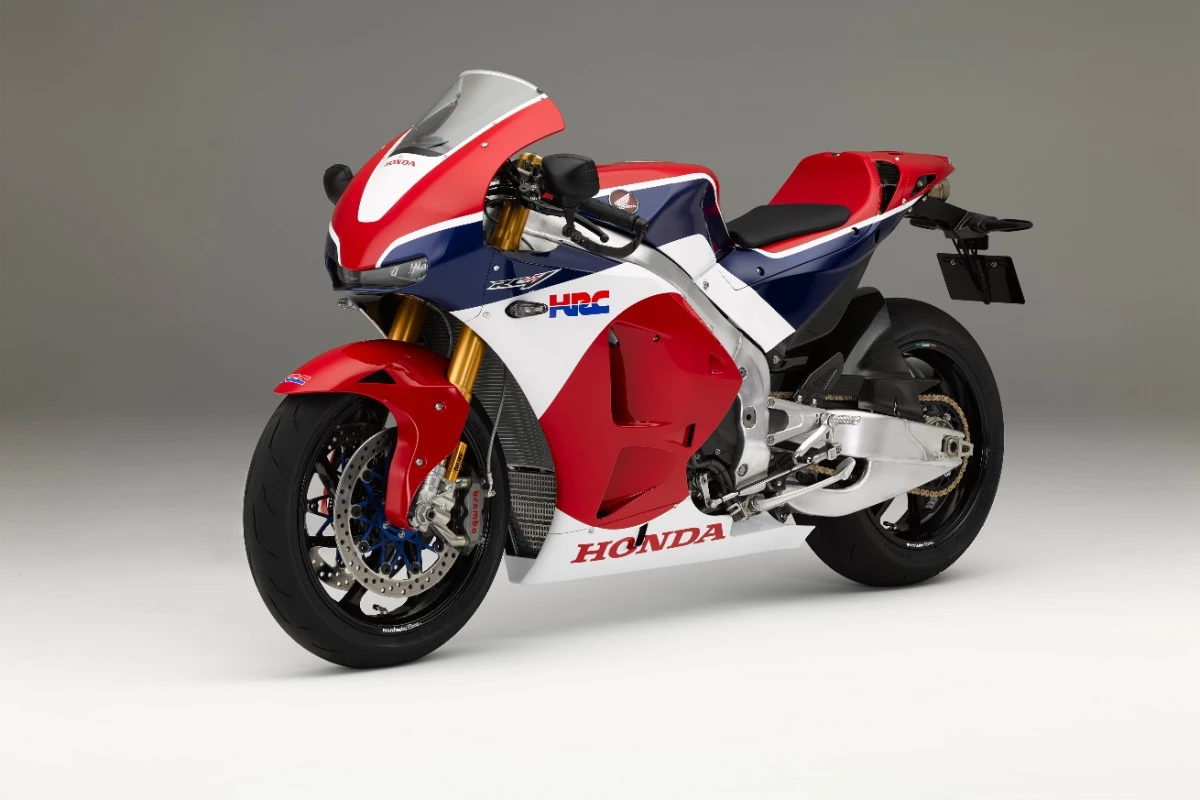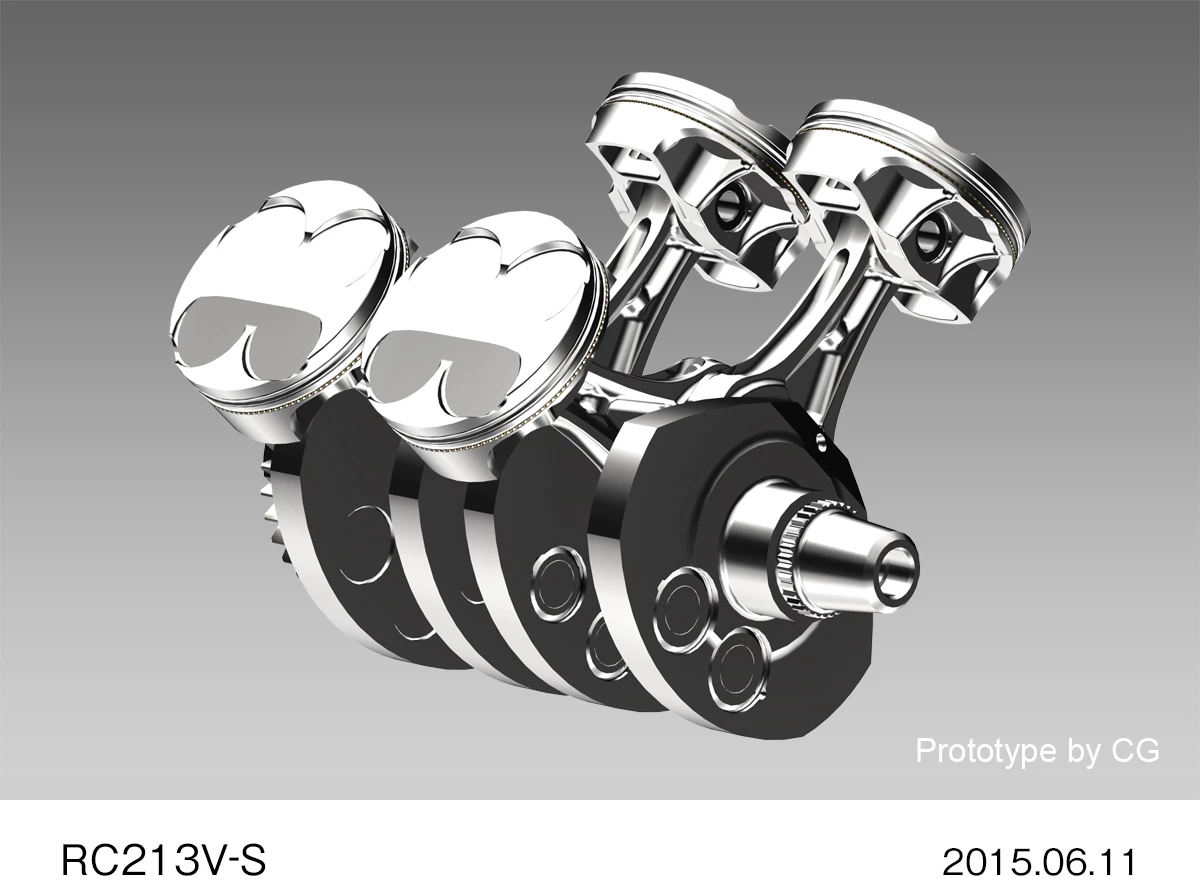Hondalaunched the online pre-ordering platform for the RC213V-S on July 13, and inless than two months the whole production run of 213 bikes has been sold out. Withthe bike’s full spec sheet in hand we take a closer look at what is on offerfrom Honda’s road-legal MotoGP replica.
Ever sincethe official unveiling of the RC213V-S, the Internet is rife with arguments comparingthe steep price tag against the down-to-earth performance figures that Honda released.Especially in the US market, where emission and noise norms limit theroad-going RC213V-S to just 101 hp (75 kW), analogies with output numbersoffered by typical off-the-shelf 600 cc Supersports were inevitable. In Japan,the country where this MotoGP replica was born, only a measly 70 hp (52.2 kW) makeit to the rear tire without the Sports Kit.
FromHonda’s perspective the RC213V-S is not about dollar-to-power correlations. Theworld’s biggest motorcycle manufacturer decided to offer a unique opportunityto experience first-hand how MotoGP riders race the RC213V to victories. Honda didthis with a motorcycle tuned for legal use on public roads and was provenright; its collectible race replica sold out almost one month before the orderingperiod would officially expire in September 30.

Themotorcycle is hand-built at an exclusive workshop set up inside the Kumamoto factoryin Japan. The personnel working on the RC213V-S have gone through specialtraining and the manufacturing time required is enormous by modern productionstandards: one motorcycle per day. This is an inevitable reality when full-timewelders have to manually fabricate each frame, swingarm and fuel tank, beforeevery nut and bolt on the motorcycle has to be tightened to the specifiedtorque by hand, without the use of inaccurate power tools.
As a racingmachine, the RC213V has been designed with a different philosophy compared to atypical production model. The target is mass concentration as a means of reducingthe moment of inertia. Compact and lightweight, the bike has to be as maneuverableas possible while handling 270+ hp (201.4 kW), and this holy purpose pushesengineering far from any standard production logic. Material tolerances are calculateddown to the minimum, weight is dictated only by FIM’s rule book, and the onlything that matters is lapping faster than the competition. You won’t even findanti-corrosion treatment on the RCV’s metals; it’s useless in racing, besides whoin his right mind would ever expect this bike to be parked outside?
TheRC213V-S is not simply "based" on the RC213V; it is essentially the same bike,minus those parts that couldn’t possibly stand in a commercially-availablepackage. The seamless transmission is the most obvious; we’re talking about agame-changing piece of engineering whose inner workings are known to a handfulof people with exclusive access to HRC’s top-secret labs. Rumored to cost over US$500,000,it still is a technological advantage for Honda since its introduction in 2011,as its main competitors have just started catching up. During MotoGP raceweekends it is tended by special HRC engineers in total secrecy – not even the riders'engineers are allowed to watch. We cannot imagine Honda adding this to aproduction bike yet – even if we disregard any pricing notions.

The samegoes for the pneumatic valves, an expensive and difficult-to-service systemthat was understandably discarded for a conventional coil spring system,retaining though the cam gear train. Given that the S-version engine is limitedto just 12,000 rpm, there is no actual need for a mechanism that is meant toprovide accurate valve operation at very high rotation rates.
Afterremoving these two features from the RC213V, we arrive at the spec level of theopen category RCV1000R that costs around $1.6 million to the customer teamsthat use it. This is essentially the motorcycle that Nicky Hayden was racing lastyear.
Complianceto road-going norms also means removing the carbon disc brakes. Until theyreach their operating temperature, they just don’t work. If it rains, you’d bebetter off with standard steel discs covered in butter. In their place Hondahas opted for the very same Brembo steel kit that the factory RCVs run on wetraces. The complete braking system, down to the trick brake pads, isn’t cheapeither.
Theremaining 90-degree 999 cc V4 engine is essentially the same compact unit usedon the RC213V. The difference in power output is down to the electronicmanagement, which limits the revs to 12,000 rpm (the US model is further limitedto 101 hp by means of an 8,000 rpm cap) and of course the engine’s constrictedbreathing: exhausts with catalytic converters and a LED lighting structure inplace of the ram-air intakes of the racing bike.

The frame,swingarm and suspension of the S-model are almost identical to those of theRC213V. The aluminum twin spar frame with variable thickness carries severaladjustability features to the road-legal version, although the ride heightadjusting rod for the swingarm is only part of the Sports Kit. The Ohlinssuspension, TTX25 forks and TTX36 shock absorber are the same MotoGP-specparts we'd see on the RC213V. They only differ in the dust seals added to theforks for road use, and a preload adjuster designed exclusively for the RC213V-Srear shock.
The resultis a motorcycle with a curb weight of 190 kg (418 lb) with all its requiredroad-going equipment and a full tank of gas. Get rid of the lights, indicators,mirrors, license plate holders and heavy exhausts with huge expansion chambersand catalytic converters to see the total curb weight drop down to 177 kg (390lb).
The Sports Kit thatcompletes the transformation from a road-legal replica to a full-on track racerincludes a host of parts that return the motorcycle closer to its MotoGP roots.The main part of the kit is the Electronic Control Unit (ECU) that unleashes215 hp (160 kW) at 13,000 rpm; that's 2,000 rpm higher than the maximumhorsepower mark of the road-legal version. The set of free-breathing exhaustssure helps a lot in this direction. The sportier side of the RC213V-S is complementedby a logger that records data in real time and combines it with GPS input toprovide an analytic overview of how the motorcycle was ridden.
Part of the SportsKit is also a load sensor-type quickshifter in place of the road-going switch type.The racing part is adjustable for shift operating load in five levels and iscombined with an inverse shifting drum that comes straight off the RC213V.
Other notable partsof this extra kit include a ram air intake made of carbon fiber-reinforcedplastic that replaces the lights at the nose of the fairing, a connecting rodfor the rear suspension that allows for ride height adjustments, a set withthree drive (15,16,17 teeth) and six driven (40 to 45 teeth) final transmission sprockets, aremote control unit for the front brake lever, special Brembo racing brakepads, plus a number of tidbits like plugs and plastic guards.

Thesport-kitted RC213V-S is no more street-worthy, but at last it now looks like aproper racer with over 215 hp for 177 kg curb weight. We can only try toimagine these performance figures on a bike that has achieved optimal mass concentration,sporting an inertial mass lower than that of 600 cc production Supersports.Adorned with components that no Superbike has ever dreamt of, we can get a pictureof just how unique this MotoGP replica actually is.
Honestly, wecan't think of someone forking out all that money for one, only to avoid theextra 6-7 percent for the Sports Kit. The bike’s road legal status sounds morelike a complimentary feature, but it is also what chokes its performance. Itwas unavoidable trying to constrain within stingy emission and sound levels aV4 that had never before found itself in the same sentence with the word "road."Just as we haven’t seen all that many Ducati Desmosedici RRs in the streetsduring the last decade, we probably won’t see often an RC213V-S commuting in a busyavenue. They’ll all be at home fully kitted, shining and anxiously waiting forthe next track day.
It’s notevery day that a motorcycle with two recent MotoGP titles under its belt (2013and 2014 by Marc Marquez) goes on sale to the public. With the high productioncosts it entails, the tall price tag was more or less expected. There is nocontemporary yardstick to measure its value against; it’s one of a kind. Ifthere is one tangible fact about the RC213V-S, it’s that it sold out in 50 days,hinting that Honda could have probably charged more and still people would havebought it.
In MotoGPterms, the RC213V-S is nowhere near the factory RC213V. It is actually similarto the RCV1000R production racer that Nicky Hayden could hardly ride into thetop ten; and he’s a former World Champion. Yet for us mortals, this would be theabsolutely closest to riding a factory Honda MotoGP racer – most would lust for a rideon it, even in its most restricted form.
Don't miss out on a visit to our gallery section, for a large collection of technical drawings and images of the RC213V-S.
In Honda's latest video, the Project Leaders of the RC213V-S explain its creation process.
Enjoy Casey Stoner as he rides and reviews the motorcycle.
Source: Honda
















































